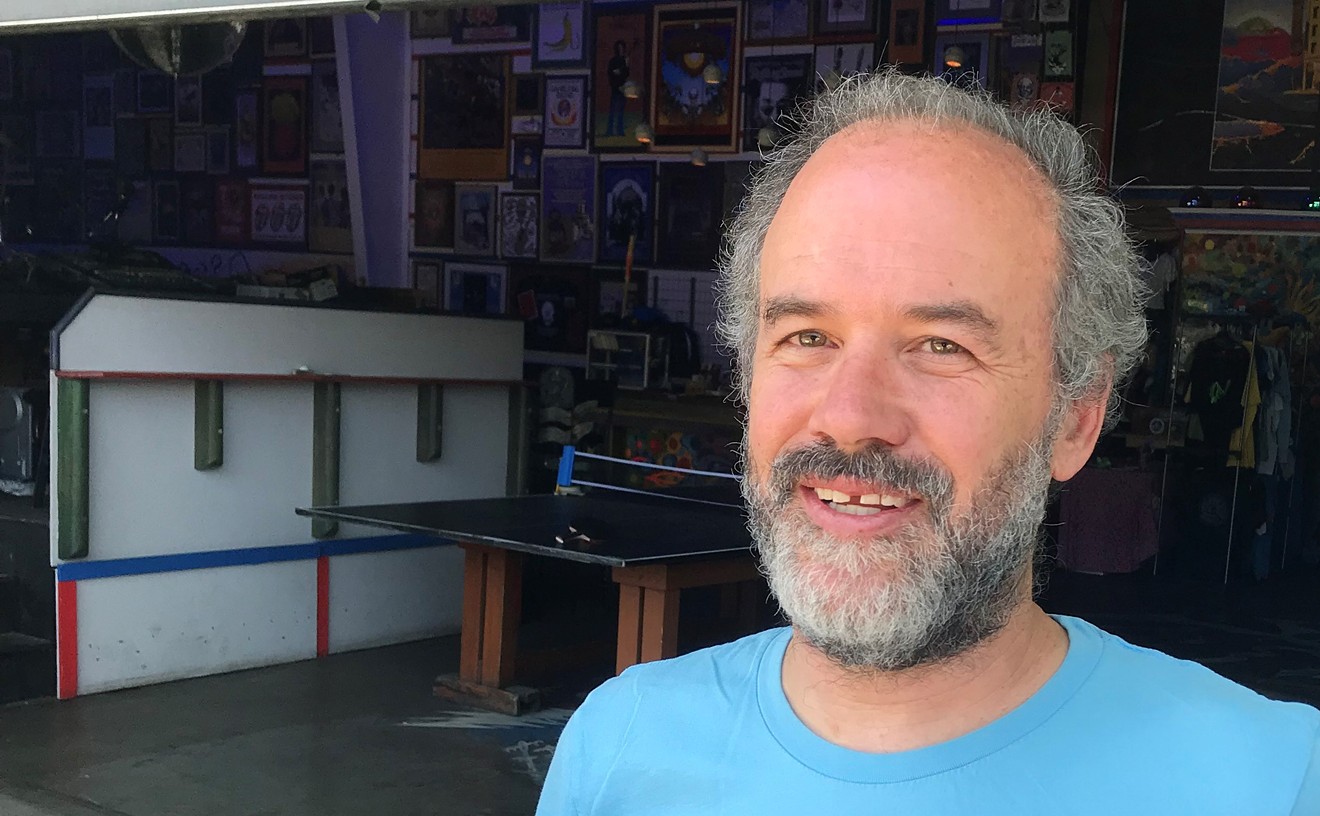It's been a rough time for people who rely on the Animas River in southwestern Colorado, ever since the August 5 blowout at the Gold King Mine that released three million gallons of toxic, heavy-metal-laced gunk into the river. A consortium of businesses, public agencies, environmental groups and other stakeholders is hosting an open house and "celebration" of the river in Durango on Sunday, November 1, billing it as an opportunity to answer questions, quash rumors and talk about remediation efforts under way. But that event is unfolding in the shadow of disturbing reports about the extent of the problem and, yes, growing animus along the Animas.
As we first reported in a 2005 cover story, "What Lies Beneath," issues surrounding toxic mine runoff in the old Eureka District above Silverton date back back decades. Sunnyside, the last big mining operation in the area, closed in 1991, taking many of the jobs in San Juan County with it. Under a complicated deal with state regulators, the mine's owners spent millions cleaning up the area and sealing off the mine with bulkheads. But that set the stage for years of finger-pointing about whether rising water levels at nearby mines, including Gold King, were the result of infiltration from the sealed-off (and flooded) Sunnyside mine pool. Todd Hennis, whose San Juan Corporation took over ownership of the Gold King shortly after our article was published, has always maintained that the water quality threats will persist until the Sunnyside pool is treated and abated.
Sunnyside's owner, Kinross Gold, has always denied any responsibility for the problem. But an Environmental Protection Agency memorandum from 2014, written well before the Gold King blowout, suggests a cause-effect scenario that's difficult to dispute: "Flows from Red and Bonita Mine, Gold King (Level 7) Mine, and Mogul Mine all experienced significant increases following the construction of concrete bulkheads in Sunnyside Mine-American Tunnel between 1996 and 2002," the memo reads. "Following installation of three bulkheads in the Sunnyside Mine system, water treatment of the discharge from the American Tunnel and Cement Creek was discontinued. Water quality in the Animas River has degraded since that time."
A recent engineering report, commissioned by a foundation to investigate the situation, concludes that the rising mine pool at Sunnyside exceeds the design specifications of two of the three bulkheads. That is consistent with what Hennis told me back in August — that a bulkhead failure at Sunnyside could result in a spill of billions of gallons of toxic water, a mess that could "run for months and affect rivers all the way down to the Mexican border."
The EPA now has a temporary water treatment plant operating on land Hennis owns at Gladstone, treating up to 800 gallons per minute of Gold King drainage. But Hennis has been frustrated by what he views as a government takeover of his property and a lack of resolve or resources to tackle the problem at its true source. He vowed at a recent river stakeholders meeting that he "won't let Gladstone get stolen from me."
All of which should make for an interesting open house that runs from noon to 2 p.m. Sunday at the La Plata County Fairgrounds. "EPA has just told me to go walk off a short pier on a settlement agreement," Hennis laments. "They are trying to squeeze the Gladstone properties out of me. I have never asked for any money for the use of the land."
[
{
"name": "Air - MediumRectangle - Inline Content - Mobile Display Size",
"component": "12017618",
"insertPoint": "2",
"requiredCountToDisplay": "2"
},{
"name": "Editor Picks",
"component": "17242653",
"insertPoint": "4",
"requiredCountToDisplay": "1"
},{
"name": "Inline Links",
"component": "18838239",
"insertPoint": "8th",
"startingPoint": 8,
"requiredCountToDisplay": "7",
"maxInsertions": 25
},{
"name": "Air - MediumRectangle - Combo - Inline Content",
"component": "17261320",
"insertPoint": "8th",
"startingPoint": 8,
"requiredCountToDisplay": "7",
"maxInsertions": 25
},{
"name": "Inline Links",
"component": "18838239",
"insertPoint": "8th",
"startingPoint": 12,
"requiredCountToDisplay": "11",
"maxInsertions": 25
},{
"name": "Air - Leaderboard Tower - Combo - Inline Content",
"component": "17261321",
"insertPoint": "8th",
"startingPoint": 12,
"requiredCountToDisplay": "11",
"maxInsertions": 25
}
]











